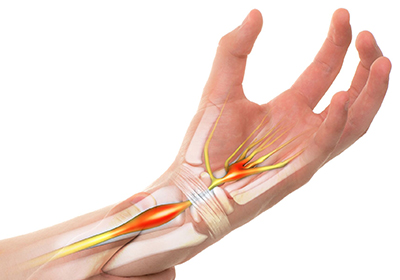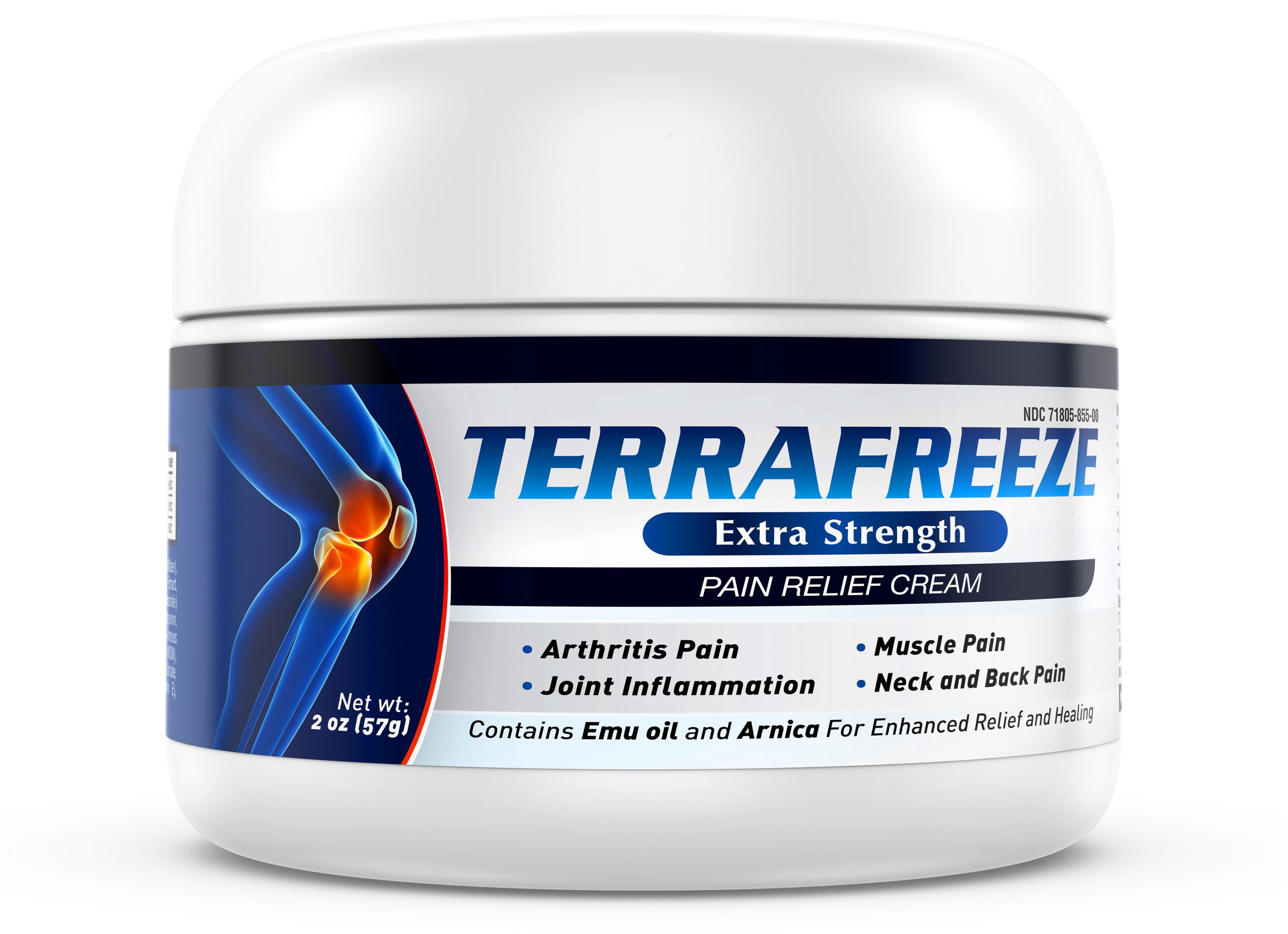Carpal Tunnel Treatment And Relief

Welcome to the ultimate guide on Carpal Tunnel Syndrome! In this article, we will cover various aspects of this common condition.
Whether you are seeking to understand the causes and symptoms, looking for preventive measures, exploring non-surgical treatments, or considering surgical options for relief, we have got you covered.
What is Carpal Tunnel Syndrome?
Carpal tunnel syndrome is a common condition that affects the hand and wrist, causing pain, numbness, and tingling. It occurs when the median nerve, which runs from the forearm to the hand through a narrow passageway called the carpal tunnel, becomes compressed or squeezed. This compression can be caused by a variety of factors, including repetitive hand movements, injury to the wrist, or certain medical conditions.
Understanding what carpal tunnel syndrome is can help individuals recognize its symptoms and seek appropriate treatment. The most common symptoms include pain or discomfort in the hand and wrist, especially at night; numbness or tingling in the fingers; weakness in the hand; and difficulty gripping objects. These symptoms may start gradually and worsen over time if left untreated. It’s important to note that carpal tunnel syndrome can affect one or both hands.
If you suspect you may have carpal tunnel syndrome, it’s essential to consult with a healthcare professional for an accurate diagnosis. They will evaluate your symptoms, perform physical examinations, and may order additional tests such as nerve conduction studies or imaging scans. Early detection and treatment are crucial for managing carpal tunnel syndrome effectively and preventing further complications.
Understanding the Causes and Symptoms of Carpal Tunnel Syndrome
Understanding the causes and symptoms of carpal tunnel syndrome is crucial in order to effectively manage and treat this condition. Carpal tunnel syndrome occurs when the median nerve, which runs from the forearm into the hand, becomes compressed or squeezed at the wrist. This compression can be caused by a variety of factors, including repetitive hand movements, such as typing or using a computer mouse for extended periods of time. Other potential causes include wrist injuries, certain medical conditions like diabetes or arthritis, and hormonal changes during pregnancy.
The symptoms of carpal tunnel syndrome can vary from person to person but often include pain, numbness, tingling, and weakness in the hand and fingers. These symptoms typically occur in the thumb, index finger, middle finger, and half of the ring finger. Some individuals may also experience discomfort that radiates up the arm or into the shoulder. Symptoms are often worse at night and can interfere with sleep.
If you suspect you may have carpal tunnel syndrome, it is important to consult with a healthcare professional for an accurate diagnosis. They will be able to evaluate your symptoms and medical history to determine if carpal tunnel syndrome is indeed the cause. Understanding the causes and symptoms of this condition will empower you to make informed decisions about treatment options and lifestyle modifications that can help alleviate your discomfort and improve your quality of life.
Preventing Carpal Tunnel Syndrome: Tips for a Healthy Lifestyle
One of the most effective ways to prevent carpal tunnel syndrome is by adopting a healthy lifestyle. This includes maintaining a proper posture while working or performing any repetitive tasks that involve the use of your hands and wrists. It is important to keep your wrists in a neutral position, avoiding excessive bending or flexing. Additionally, taking regular breaks and stretching your hands and fingers can help alleviate strain on the median nerve, which is responsible for carpal tunnel syndrome.
Incorporating regular exercise into your routine can also play a significant role in preventing carpal tunnel syndrome. Engaging in activities that strengthen the muscles in your hands, wrists, and forearms can help improve their flexibility and reduce the risk of developing this condition. Exercises such as wrist curls, finger stretches, and hand squeezes are particularly beneficial. Remember to start slowly and gradually increase the intensity of your workouts to avoid overexertion.
Another important aspect of maintaining a healthy lifestyle to prevent carpal tunnel syndrome is managing stress levels. High levels of stress can lead to muscle tension and increased pressure on the nerves in your hands and wrists. Finding healthy ways to cope with stress, such as practicing relaxation techniques or engaging in hobbies you enjoy, can significantly reduce the likelihood of developing carpal tunnel syndrome.
Non-Surgical Treatments for Carpal Tunnel Syndrome
Non-surgical treatments for carpal tunnel syndrome can be highly effective in relieving symptoms and improving overall hand function. One common approach is the use of wrist splints or braces, which help to immobilize the wrist and reduce pressure on the median nerve. These devices are typically worn at night or during activities that aggravate symptoms, such as typing or repetitive motions. By providing support and stability to the affected area, wrist splints can alleviate pain and promote healing.
In addition to splinting, physical therapy exercises can also play a crucial role in non-surgical treatment for carpal tunnel syndrome. These exercises focus on strengthening the muscles in the hand and forearm, improving flexibility, and reducing inflammation. A skilled physical therapist can guide patients through a customized exercise program that targets their specific needs and helps to alleviate symptoms. Regular practice of these exercises can lead to significant improvements in hand function and overall quality of life.
Another non-surgical treatment option for carpal tunnel syndrome is corticosteroid injections. These injections deliver powerful anti-inflammatory medication directly into the affected area, reducing swelling and relieving pain. While corticosteroid injections provide temporary relief, they may not be a long-term solution for everyone. It’s important to discuss potential risks and benefits with a healthcare professional before considering this treatment option.
Surgical Options for Carpal Tunnel Syndrome Relief
When non-surgical treatments fail to provide relief for carpal tunnel syndrome, surgical options may be considered. Surgery is often recommended when symptoms are severe or have persisted for a long time. The goal of surgery is to relieve pressure on the median nerve by enlarging the carpal tunnel. This can be done through various techniques, including open release surgery and endoscopic surgery.
Open release surgery is the traditional method for treating carpal tunnel syndrome. During this procedure, a small incision is made in the palm of the hand, allowing the surgeon to access and cut the transverse carpal ligament. This releases pressure on the median nerve and provides relief from symptoms. Open release surgery is typically performed under local anesthesia and can be done on an outpatient basis.
Endoscopic surgery is a minimally invasive alternative to open release surgery. It involves making one or two small incisions in the wrist or palm and using a tiny camera called an endoscope to guide the surgeon as they cut the transverse carpal ligament. Endoscopic surgery offers several advantages over open release surgery, including smaller incisions, less post-operative pain, and faster recovery times. However, it may not be suitable for all patients depending on their individual circumstances.
Lifestyle Modifications to Manage Carpal Tunnel Syndrome
When it comes to managing carpal tunnel syndrome, making certain lifestyle modifications can greatly improve your symptoms and overall quality of life. One important aspect to consider is ergonomics. Ensuring that your work environment is set up in a way that promotes proper posture and reduces strain on the wrists can make a significant difference. This may involve adjusting the height of your desk or chair, using an ergonomic keyboard and mouse, and taking regular breaks to stretch and rest your hands.
In addition to optimizing your workspace, incorporating regular exercise into your routine can also be beneficial. Engaging in activities that strengthen the muscles in your hands, wrists, and forearms can help alleviate pressure on the median nerve. Simple exercises such as wrist curls, finger stretches, and hand squeezes can be done throughout the day to promote flexibility and reduce discomfort.
Another lifestyle modification that can aid in managing carpal tunnel syndrome is practicing good sleep hygiene. Getting enough restful sleep each night allows your body time to repair itself and reduces inflammation in the affected area. It’s important to create a comfortable sleeping environment by using supportive pillows or splints that keep your wrists in a neutral position while you sleep.
FAQs
Q: Can carpal tunnel syndrome be treated with pain relief cream?
A: Yes, pain relief creams can be used as one of the treatment options for carpal tunnel syndrome. These topical creams often contain ingredients that provide temporary relief from pain and inflammation in the affected area. However, it’s essential to consult with a healthcare professional before using any new medication or cream.
Q: Can carpal tunnel syndrome be cured without surgery?
A: Yes, in many cases, carpal tunnel syndrome can be effectively managed and relieved without surgery. Non-surgical treatments, such as wrist splints, physical therapy, and lifestyle adjustments, often provide significant relief.
Q: How long does it take to recover from carpal tunnel surgery?
A: The recovery time after carpal tunnel surgery varies depending on the individual and the type of procedure performed. Generally, patients can resume light activities within a few weeks, with complete recovery taking several months.
Q: Can carpal tunnel syndrome come back after surgery?
A: In some cases, carpal tunnel syndrome may return after surgery. Proper post-operative care, including following rehabilitation instructions and making lifestyle changes, can help prevent recurrence.
Q: Can carpal tunnel syndrome be caused by typing?
A: Yes, repetitive activities involving the hands and wrists, such as typing, can contribute to the development of carpal tunnel syndrome. Ergonomic adjustments and regular breaks can help reduce the risk.
Q: Can carpal tunnel syndrome affect both hands?
A: Yes, carpal tunnel syndrome can affect one or both hands. It’s common for symptoms to start in one hand and gradually progress to the other.
Q: Can carpal tunnel syndrome be hereditary?
A: While carpal tunnel syndrome is not directly hereditary, certain factors, such as family history of CTS or certain medical conditions, may increase the likelihood of developing the condition.
TERRAFREEZE Pain Relief Cream for Carpal Tunnel Syndrome
TERRAFREEZE is a perfect blend of Science and Nature, combining 3 powerful active ingredients: Menthol, Methyl Salicylate and Histamine Dihydrochloride plus the proprietary blend of Arnica Montana and Emu Oil for enhanced relief from joint and muscle pains.
Terrafreeze works by penetrating deep into the skin delivering the analgesic, anti-inflammatory and rejuvenating properties of its ingredients right where it is needed.
Aside from their analgesic properties, the active ingredients of Terrafreeze also act as vasodilators. When applied to affected area it causes blood vessels to extend, which increases blood circulation in the area. This brings additional nutrients to the area and can help with cellular repair. Blood brings in new nutrients to repair the area and carries away toxic waste generated. Recuperating happens a lot faster because of this.
Arnica is known for its anti-inflammatory and pain reduction properties. Arnica also contains thymol that also stimulates blood circulation and healing. Arnica works by breaking up trapped fluids from bruised tissue, joints and muscle.
Emu works by penetrating through the skin’s stratum corneum barrier, allowing for easier absorption of other ingredients that comes with it, making it an excellent carrier for therapeutic remedies. Emu oil can also alleviate tormenting nerve pain like Carpal tunnel Syndrome including the burning and tingling numbness in the fingers.
These powerful ingredients of Terrafreeze are formulated to work together to give you immediate relief from pain and to aid the recovery process. Terrafreeze improves the mobility and flexibility of the affected joint, nerves and muscles without side effects.
Imagine what it was like before you had nagging carpal tunnel problems. When you were pain-free and could enjoy everything life had to offer. It can be that way again, with Terrafreeze.
